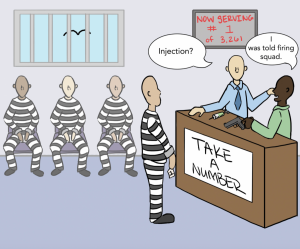With growing concern for the environment and humans’ impact on the environment, some have recently become dissatisfied with current options for the internment of themselves and their loved ones. Cremation, on average, utilizes the same amount of electricity as one person would use in an entire month. It also releases greenhouse gases into the environment, something many have been attempting to lower for decades. Traditional burial isn’t as eco-friendly as some would like either. Most coffins are made from wood, which is a concern because of growing deforestation. Additionally, heavy machinery is usually required, again emitting gases into the atmosphere. There is also growing worry that embalming fluids, over time, could leak into the ground and contaminate water sources.
For those who are deeply concerned about improving the environment, this has left them in a conundrum of what to do when they pass away. Some have considered the option of a biodegradable coffin, which eliminates the concern for trees, but again, burials typically require heavy machinery, which some eco-conscious individuals wish to avoid. This is the situation Katrina Spade found herself in. She had no religious or cultural ties that she felt she would need to honor after death. While searching for a solution to her dilemma, she happened across a technique used by farmers for large animals who died. Some farmers compost large animals and use the compost on the farm.
This sparked an idea for Spade and she decided to develop the Urban Death Project, now known as Recompose. Recompose is dedicated to finding a way to compost the deceased to truly give back to the environment. Spade describes the process as combining corpses with wood chips and aerating them in a reusable module, as the recomposing process occurs, the bodies sink down into a composting bay. As one body sinks down, others are added on top, though Spade only plans to have two services a day to limit time constraints on families. After around 30 days, the material is sifted and the compost is removed to be used in public parks, though friends and family are encouraged to take some compost for their own gardens.
While this eco-friendly option isn’t currently available, Spade hopes to soon make it a reality. Currently headquartered in Seattle, Recompose has registered as a Public Benefit Corporation and has stated that they are attempting to emulate nature, because nature is really good a death. Recompose has also stated that they are dedicated to making this as accessible to everyone as they can, and that they aren’t concerned with profit. This option may not be for everyone, and that is understandable, however, for those concerned with their lasting carbon footprint, Recompose may be the answer to their queries.
http://www.bbc.com/future/story/20150219-i-will-be-composted-when-i-die








